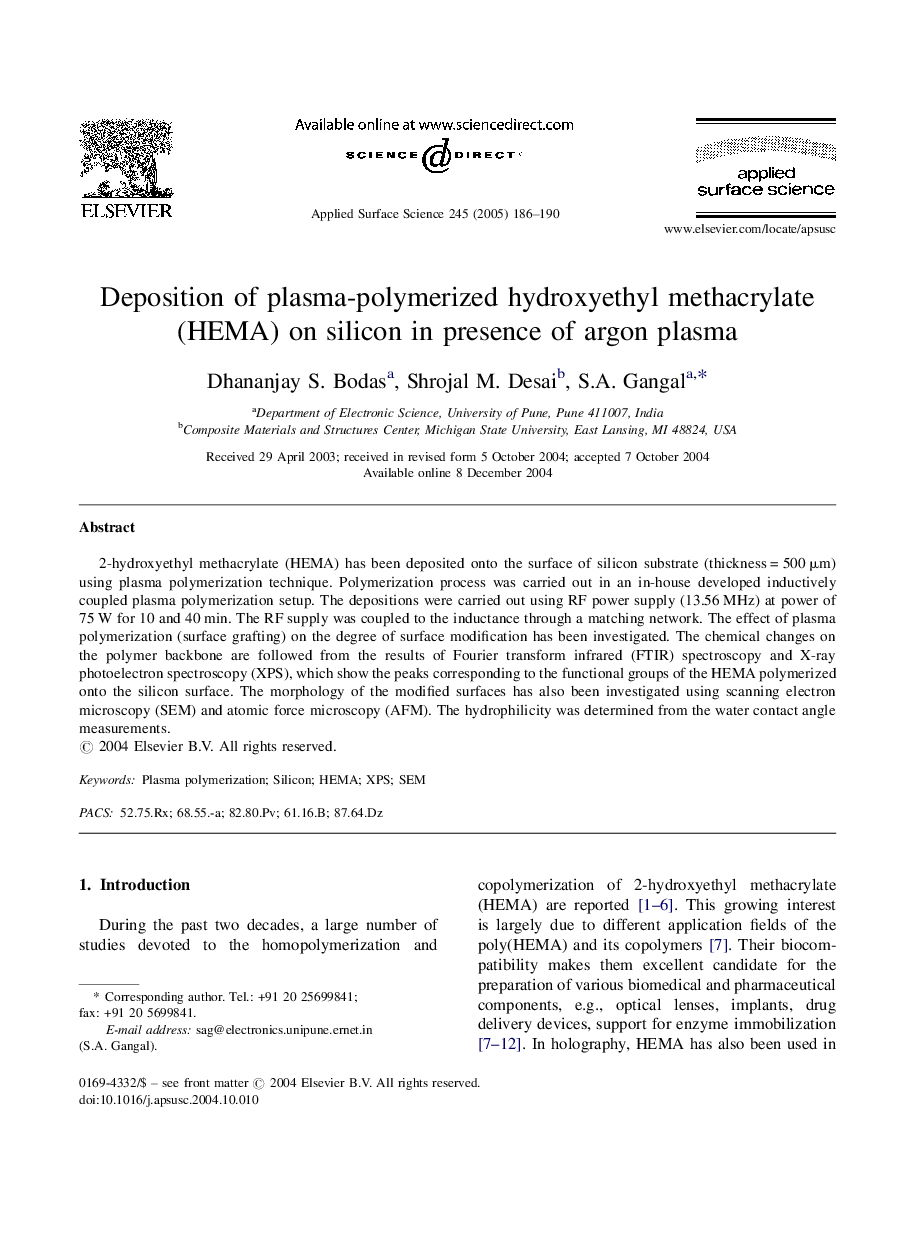| Article ID | Journal | Published Year | Pages | File Type |
|---|---|---|---|---|
| 9566798 | Applied Surface Science | 2005 | 5 Pages |
Abstract
2-hydroxyethyl methacrylate (HEMA) has been deposited onto the surface of silicon substrate (thickness = 500 μm) using plasma polymerization technique. Polymerization process was carried out in an in-house developed inductively coupled plasma polymerization setup. The depositions were carried out using RF power supply (13.56 MHz) at power of 75 W for 10 and 40 min. The RF supply was coupled to the inductance through a matching network. The effect of plasma polymerization (surface grafting) on the degree of surface modification has been investigated. The chemical changes on the polymer backbone are followed from the results of Fourier transform infrared (FTIR) spectroscopy and X-ray photoelectron spectroscopy (XPS), which show the peaks corresponding to the functional groups of the HEMA polymerized onto the silicon surface. The morphology of the modified surfaces has also been investigated using scanning electron microscopy (SEM) and atomic force microscopy (AFM). The hydrophilicity was determined from the water contact angle measurements.
Related Topics
Physical Sciences and Engineering
Chemistry
Physical and Theoretical Chemistry
Authors
Dhananjay S. Bodas, Shrojal M. Desai, S.A. Gangal,
